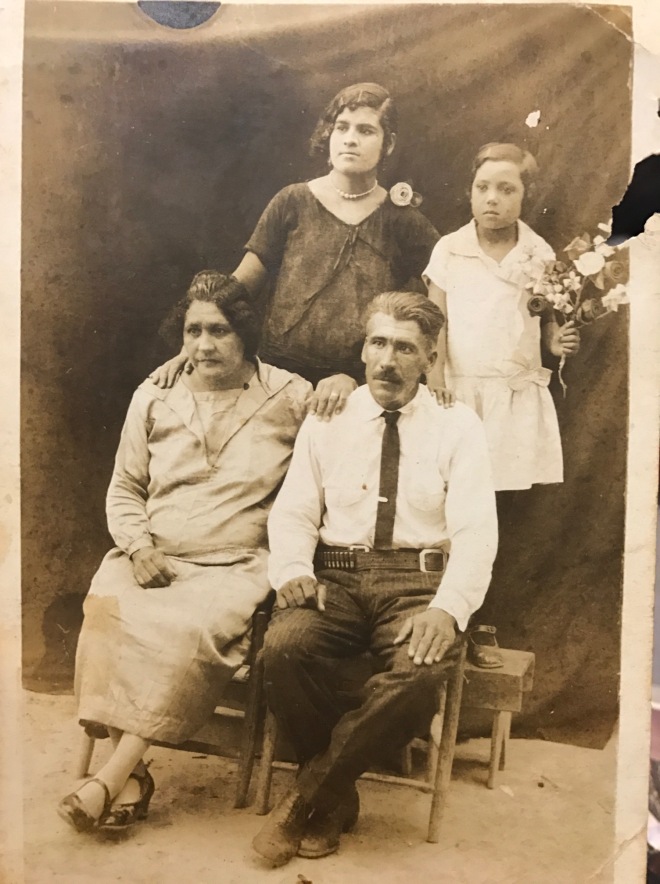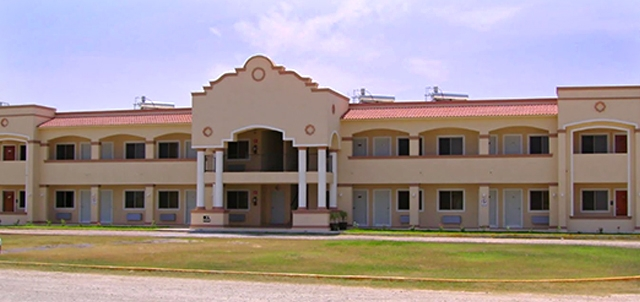A few days ago, I was inspired to sit down with one of my abuelitas and ask her about our female ancestors. This inspiration came from two places–a book I’ve been reading titled Gods of Jade and Shadow by Silvia Moreno-Garcia (which is pictured below and you should check out!), and a blog post on ancestral healing from one of my yoga instructors (which you should also check out!). Gods of Jade and Shadow is about a young Mexican girl, living in Yucatan, Mexico in the 1920’s. We always hear about Hollywood and the roaring 20’s, and as exciting as that time period always sounds, I found that learning about that era in Mexico from my abuelita was a lot more special and personal. The ancestral healing blog post that also served as inspiration for me focuses on learning about patterns and traumas that run in our families in order to heal something in our present life or to not replicate what has happened before. Let me tell you, when I asked my abuelita about my great-grandmothers, I learned about some really incredible things, things that you feel you only see in movies. It made me feel so proud to learn that I come from a family of strong women. It also made me feel so inspired–if they got through the things they did, then I can and I will get through whatever comes my way. So, I cannot emphasize how much I recommend sitting down with anyone in your family of an older generation and ask, ask, ask.
 Photo credit: Silvia Moreno-Garcia
Photo credit: Silvia Moreno-Garcia
Guadalupe Garcia Ortiz
She was one of my maternal great-grandmothers (or visabuela). She was born on July 5, 1920 and died March 3, 1987. She was likely born at Hacienda Santa Engrancia in General Teran, Nuevo Leon. Sometime before or after she got married, she moved to Rancho San Jose in China, Nuevo Leon, where my grandmother was born. My visabuela was tall, fair-skinned, very thin, and had dark hair and brown eyes. She was very kind and always happy. She worked at Rancho San Jose her whole life. She was a very hard-working woman. She spent every day working, always doing something, and no one could stop her. At the ranch, she raised, fed, and bred chickens and pigs. She also worked the fields—corn, beans, squash, and watermelons. My abuelita says she never saw my visabuela angry or sad. No matter what happened, she was always happy. Throughout her life, my visabuela never got sick, and eventually she died of old age. I never got to meet her, but the picture my abuelita paints of her makes me feel like I have a little bit of her in me. I may not have grown up at a ranch and I may not know much about the kind of manual labor my visabuela did, but I do know that I am very much an optimist, even on the hardest days and I work really hard–so much that I have to remind myself that I need breaks. I asked my abuelita what she learned from my visabuela and she said, “She taught me how to be strong. I would see her receive bad news, such as the death of one of her children, and she was strong. She was a good mother because she always kept her children close. The family she built was a community. None of her children ever left too far from her and we never saw our parents fight.” She had more than eleven children. She’s a major inspiration and she is pictured top left in the photo below at about age seven in the mid-1920’s.

Aurora Barrera
She was my other maternal visabuela–mother of my maternal grandfather. We have no record of her date of birth, but she was likely born at Rancho Guardado, Tamaulipas in the 1920’s. I could not obtain a photo of her, but my abuelita says she was tall, fair-skinned, very beautiful, with light brown eyes and light brown hair. She was very intelligent, educated, and kind. She received a full education, which during this time meant she finished high school, and then became a primary school teacher. During her spare time, she also tutored family members because the school they attended was not the greatest and my visabuela wanted to help them stay on track. A few years after she was married, she gave birth to my grandfather, but a divorce came soon after. Her ex-husband, pretty quickly remarried and had another child. My visabuela never remarried and remained independent for the rest of her life. My visabuela and her son (my grandfather) endured some pretty difficult traumas as a result of this separation. Listening to her experience made me feel grateful for the relationship I have with my parents, and helped me understand how this trauma affected my grandparents’ and parents’ lives. It also made me proud to know that my visabuela was a fully educated, independent, career-driven lady during a time where this was a rare thing for women to be.
La Generala
La Generala means female war general. As badass as she sounds, she unfortunately was not related to me, but she was someone that made a big impression on my abuelita when she was a little girl in the 1940’s. La Generala’s real name was Aleja, but no one really referred to her by her actual name. They called her Generala because she actually was a general during the war where she worked as a nurse. She ran a whole hacienda near where my abuelita lived, called Hacienda El Mirador, which was a mansion surrounded by crops and by small cottages, where the people who worked the land lived (pictured below, it is now apparently a tourist attraction). My abuelita says it was a big community. They harvested oranges, tangerines, and avocados for the community, and sold whatever was left to people in the nearby city. Since La Generala had medical experience, she also served as the doctor in the community. She did not actually own the hacienda, but the man who did own it had to leave it and left her in charge. My abuelita says that she remembers her being morena, always having her hair in two long black braids, and always wearing a long dress. My abuelita got to know La Generala because every Christmas, she would throw a big posada (Christmas party), and invited the families of all the workers. My abuelita got to attend the posadas because some of her relatives worked at the hacienda and she still smiles remembering how beautiful and fun the hacienda was during Christmas time. I think female wartime generals and doctors don’t get enough credit so here’s to La Generala and to wishing I had met her too.

I feel like it’s your turn to sit down with your mamás, tías, and abuelas, and really learn about someone in your family. I promise you’ll be happy you did.
MEET THE AUTHOR
Krishna de la Cruz is currently an attorney living in Austin, Texas. She grew up on the Texas-Mexico border in Rio Bravo, Tamaulipas and the Rio Grande Valley. She received a Bachelor of Arts in English with a Minor in Spanish from Texas State University in 2014 and Juris Doctorate from St. Mary’s University School of Law in 2017. While in law school, she was an Executive Editor on the The Scholar: St. Mary’s Law Review for Race and Social Justice where she wrote an article focused on the issue of violence against women, particularly women of color. The article is titled “Exploring the Conflicts within Carceral Feminism: A Call to Revocalize the Women Who Continue to Suffer.” During law school, she traveled to Guadalajara, Mexico, where she was certified in Mexican Legal Studies at Universidad de Guadalajara.
In her spare time, Krishna enjoys reading, journaling, and hiking Austin trails. Krishna is a big enthusiast of mental health, mindfulness, physical wellness, and her Mexican heritage.
 Photo credit: Silvia Moreno-Garcia
Photo credit: Silvia Moreno-Garcia


